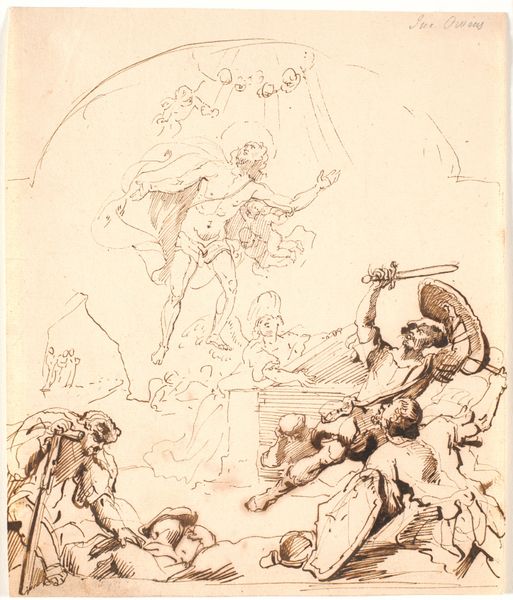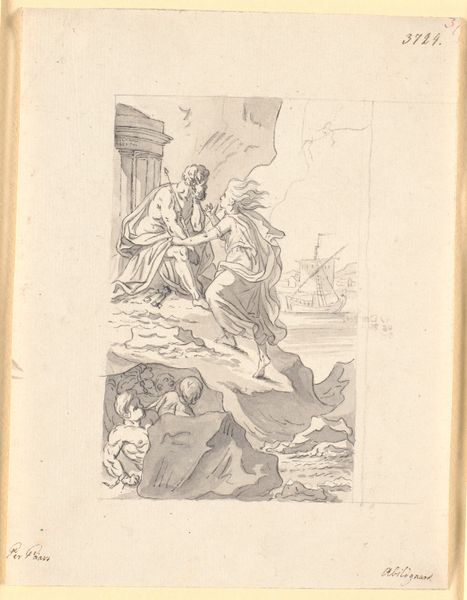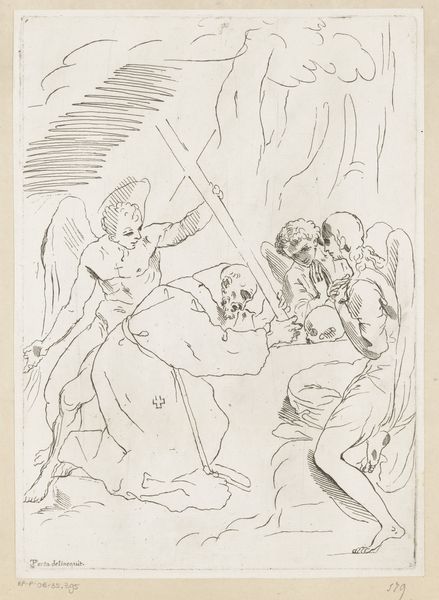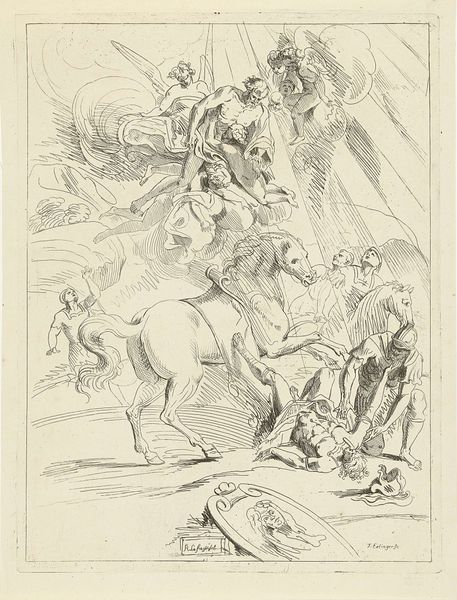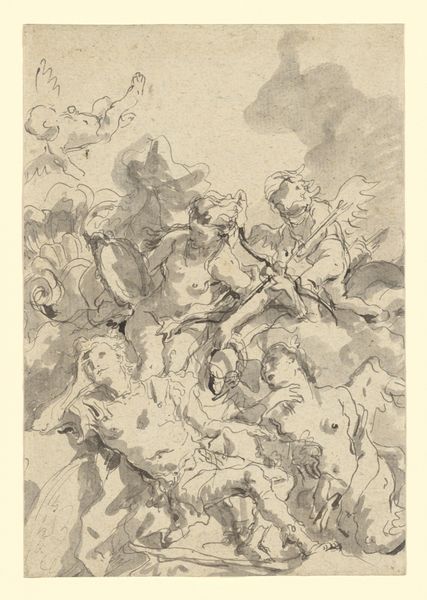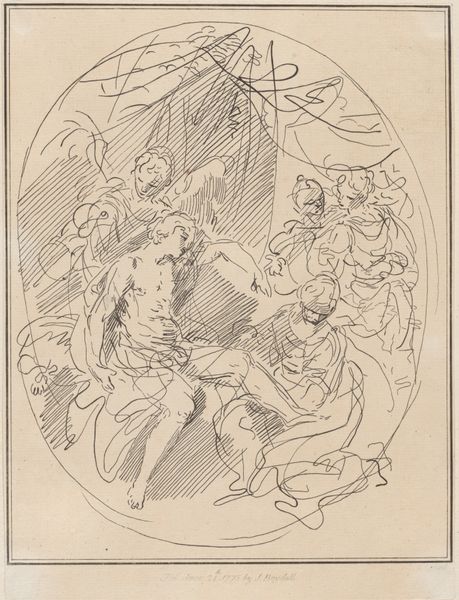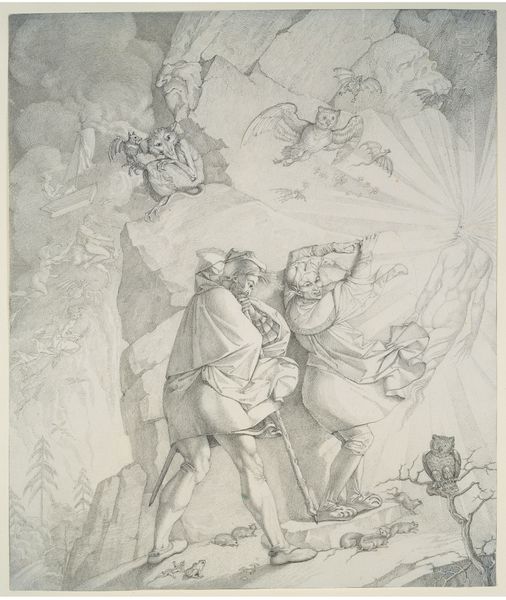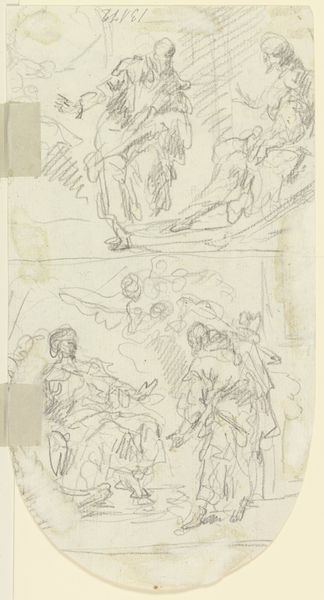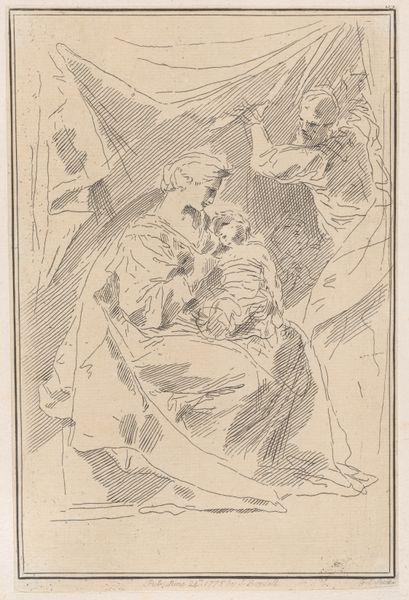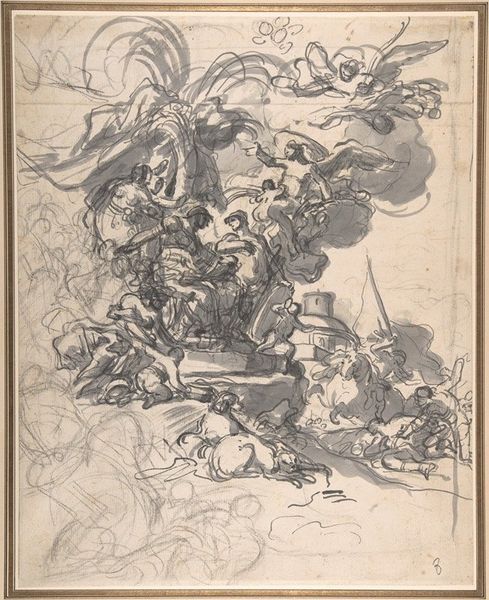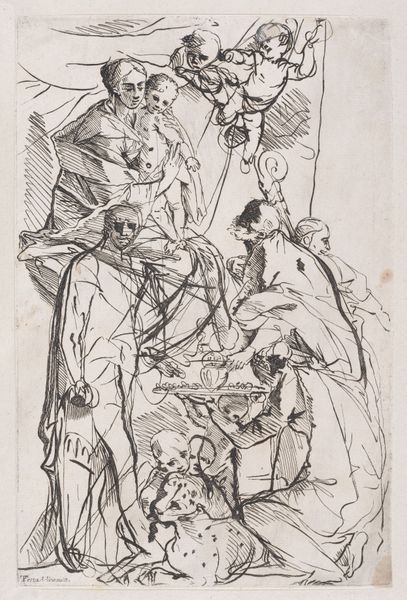
Sick people summoning a Bishop saint, who appears at upper left 1729 - 1740
0:00
0:00
drawing, print
#
drawing
#
allegory
# print
#
figuration
#
line
#
history-painting
#
academic-art
Dimensions: Plate: 16 1/4 × 11 in. (41.2 × 27.9 cm) Sheet: 20 7/8 × 15 1/4 in. (53.1 × 38.7 cm)
Copyright: Public Domain
Editor: So this is "Sick people summoning a Bishop saint, who appears at upper left" made between 1729 and 1740 by Anne Claude Philippe Caylus. It's a drawing, and a print, currently residing at the Met. It looks very academic, with clear, confident lines depicting this otherworldly scene. How would you interpret it? Curator: I'm immediately drawn to the materiality of this piece, its creation rooted in readily accessible resources. Notice the mass production implications inherent in printmaking, a stark contrast to unique handcrafted objects. It begs us to consider who this piece was for, how it circulated, and the economic structures it inhabited. Editor: Interesting, so you're focusing on its status as a print rather than a unique drawing? Curator: Precisely. What did printmaking mean at that time in relation to its potential audience, how was labor divided in the production of such images? Consider the socioeconomic disparity it brings into focus. A saint's intervention available as reproducible commodity… there’s a tension there. Editor: I see what you mean! So it's about access to both religious imagery and art itself. Does that change how we view the religious symbolism? Curator: It challenges us to reconsider the intention of this kind of work. It highlights the material reality underneath. Instead of focusing only on divine intervention, think about who benefited materially from circulating such a narrative? Editor: That definitely gives me a different lens to appreciate this artwork! Thanks for sharing that viewpoint. Curator: And I'm glad for the opportunity to really interrogate this print! Thinking through it this way shows the value and purpose behind art from the eighteenth century.
Comments
No comments
Be the first to comment and join the conversation on the ultimate creative platform.

